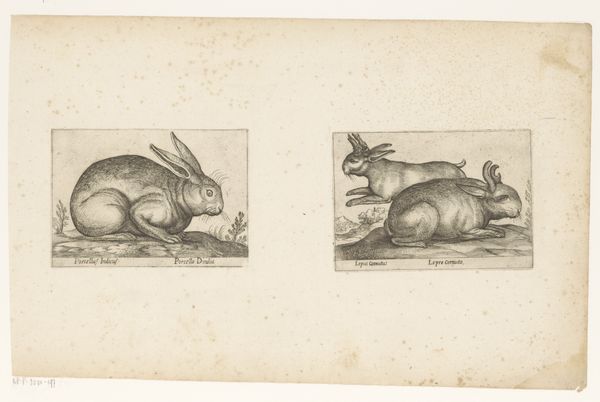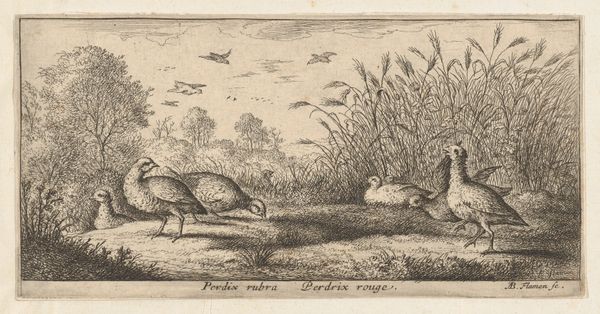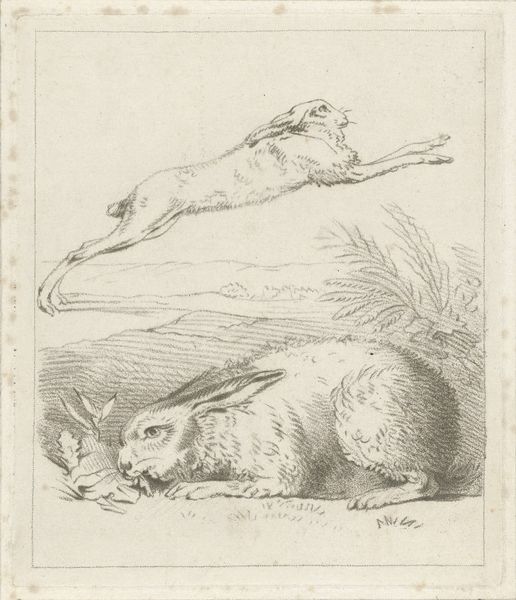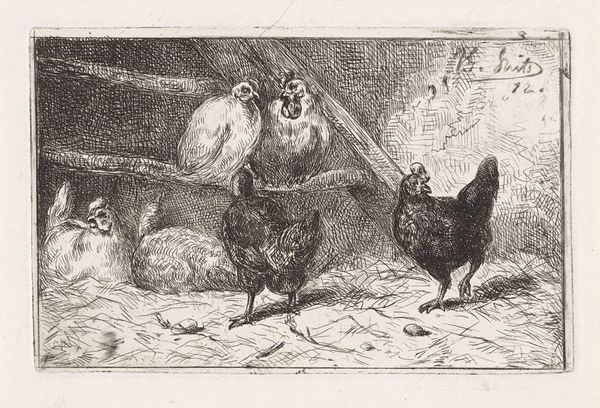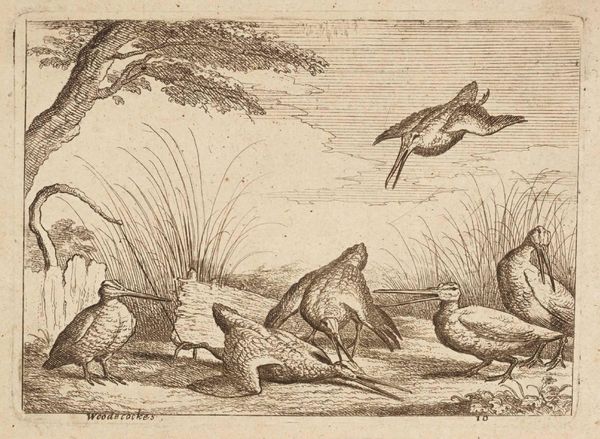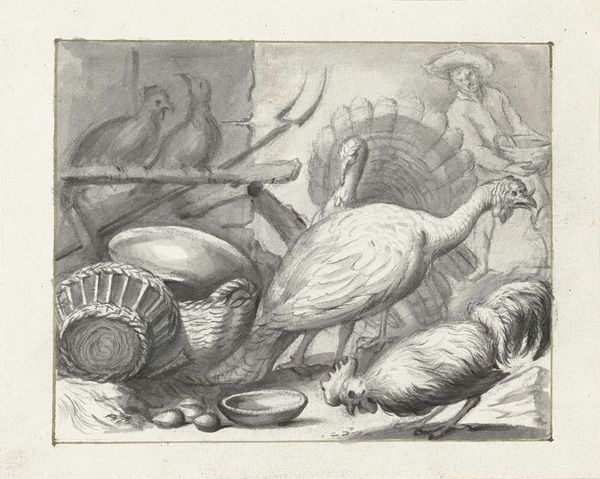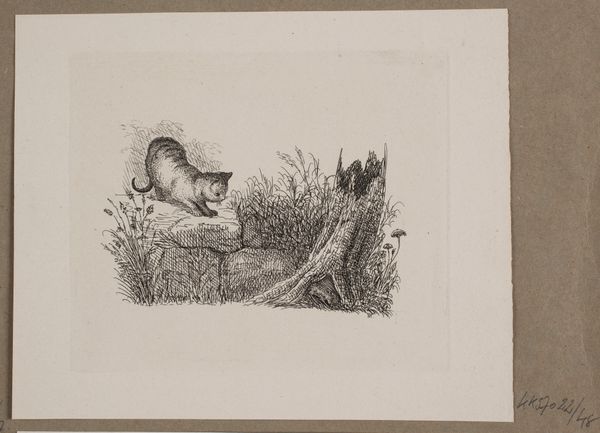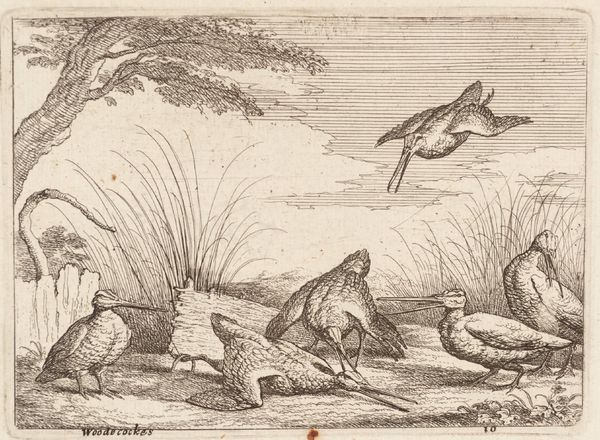
print, etching
#
baroque
#
animal
# print
#
etching
#
landscape
Dimensions: height 102 mm, width 176 mm
Copyright: Rijks Museum: Open Domain
Editor: This etching, “Four Freshwater Turtles Among Grass and Reed” by Albert Flamen, dates back to 1664. I’m struck by how delicately the artist renders the different textures, from the turtles’ shells to the blades of grass, all in a very muted palette. What do you see in this piece? Curator: Well, immediately, the turtles themselves are potent symbols. They represent longevity, patience, and grounding, deeply rooted in various cultures. Note how Flamen positions them within this landscape – the reeds, the water, even the birds above. Do you think this is simply a scene of nature, or something more? Editor: Hmmm, it could be more symbolic… Maybe the contrast between the turtles on the ground and the birds in flight suggests different ways of being? Curator: Precisely! And look at the architectural structures in the distance. They remind us of the relationship between the natural world and human endeavor, also a favorite theme of the baroque era. These inclusions give depth not just spatially but also conceptually. They ask us to consider how we relate to and impact our surroundings, adding layers of cultural meaning onto an otherwise simple nature scene. Are we meant to see these turtles as observers, or even symbols of a specific mindset toward these spaces? Editor: I hadn’t considered that. It’s amazing how much depth a seemingly simple image can hold. It makes me appreciate how images carry layers of meaning. Curator: Indeed. Every mark contributes to the overall narrative. That careful balance helps this etching connect with its audience through these archetypal figures in an age of emerging scientific study and symbolic traditions. The turtles carry on, just as we continue to analyze and learn.
Comments
No comments
Be the first to comment and join the conversation on the ultimate creative platform.
